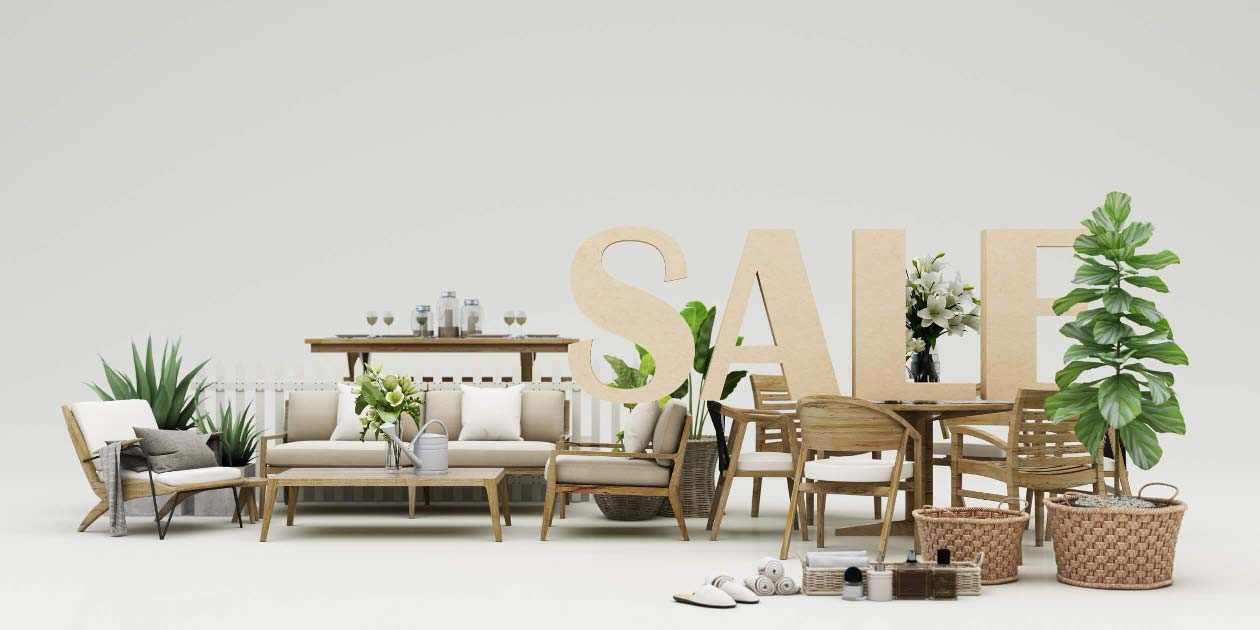When a customer comes to you to purchase outdoor living products, they trust you with making an important addition to their home. They are bringing you into the family dynamic so that you can help them choose what is best for them. This requires finesse from building the customer relationship to knowing your product to tending to every display detail.
Here’s what you need to know.
Make the customer feel comfortable
The first step in building trust is making the customer feel comfortable but tread carefully. Find some common ground with your customer, but don’t be slick and salesy. Ask questions and build rapport, but don’t overwhelm them. Learn to read your customer. Some just want to buy lawn furniture, while others want some hand-holding as they carefully decide.
Know your product
Know your product inside and out. Know how it stacks up against other similar products. You have to know the benefits of your product and any shortcomings. This is not necessarily a flaw in the furniture, but it may be something that some customers don’t want to deal with. Be flexible and be ready to offer options. Trendy pieces will last for a season or two, but classic pieces provide long-term value.
Know what your customer needs
While a big part of your job is closing the sale, the bigger part is helping the customer choose the right furniture – and avoid the wrong one. Knowing what your customers need, not just what they want, can help you do that.
Look at the existing space as it is and help them find pieces that are complementary to that space. A family with children will have different needs than a retired couple or someone who entertains frequently. You want the furniture to stand up to the demands that the customer will put on it.
Find out what motivates your customer
You want your customer to feel good about their purchase, so spend some time finding out what motivates them. Do they want a trusted name with a solid reputation? Or are they more interested in benefits and features? This is especially true when you sell outdoor furniture that is less well-known. Perhaps they value having multifunctional pieces or plan to use their space for more than one purpose. You want to help them find furniture and pieces that accommodate those needs.
Be honest
One of the worst things you can do in a sale is lie. The sales relationship is built on trust. If you don’t know the answer to a question, don’t just say the first thing that comes to mind; tell the customer you don’t know but that you will find out – then do it. If, in your honesty, you have to reveal something you would rather not because it does not flatter the product, be ready to offer something better.
Know the fine print
Warranties, construction, care, and replacement costs are information you can pass on to the customer as part of your pitch and a way to instill trust. Often the fine print will influence the buying decision. Outdoor living products are exposed to the elements, and there is a higher expectation that they are well constructed with good warranties. Being able to provide that information to your customers is vital.
Set reasonable expectations of product performance
Avoid hyperinflating the furniture’s performance just to make the sale. Keep the expectation realistic. If the customer is looking for something more, offer them more – products that perform in the way they expect. If it costs more, explain that the higher price tag for a better-performing product ensures that they will get what they want and that it is more likely to meet their expectations.
Know the key selling points of your product
You have an overall knowledge of your product, but you should also know the key selling points. Outdoor living products offer various selling points based on construction, materials, and brand. Learn the key selling points for each piece so you can play those up while you are talking to your customer, especially if you can align those selling points with the customer’s needs and expectations.
Have a feature and benefit story for each product
You need to have a feature and benefit story for each piece of furniture and each collection. These stories allow you to construct scenarios that place the customer in their home with the furniture. It sparks their imagination and lets them “see” the furniture in the home.
Be knowledgeable about the entire line or category
Knowledge of the whole category gives you an advantage because you can offer choices. Sometimes a different price point or better quality are the very things that will remove hesitations and close the sale. Often it opens the door to upselling the customer.
Create a great display
Outdoor living products are much easier to sell when the customer can visit the store or showroom, see them, touch them, and try them out. Creating a powerful display is a great selling tool. This includes great signage and arranging the furniture as if they are on someone’s patio just waiting to be used. However, you cannot deny the power of online sales, and there is a tremendous opportunity to create visually appealing online displays while offering the convenience of online shopping.
This can all be summed up as “sell the experience.” Get to know your client's wants and needs, then deliver them with exceptional service.



